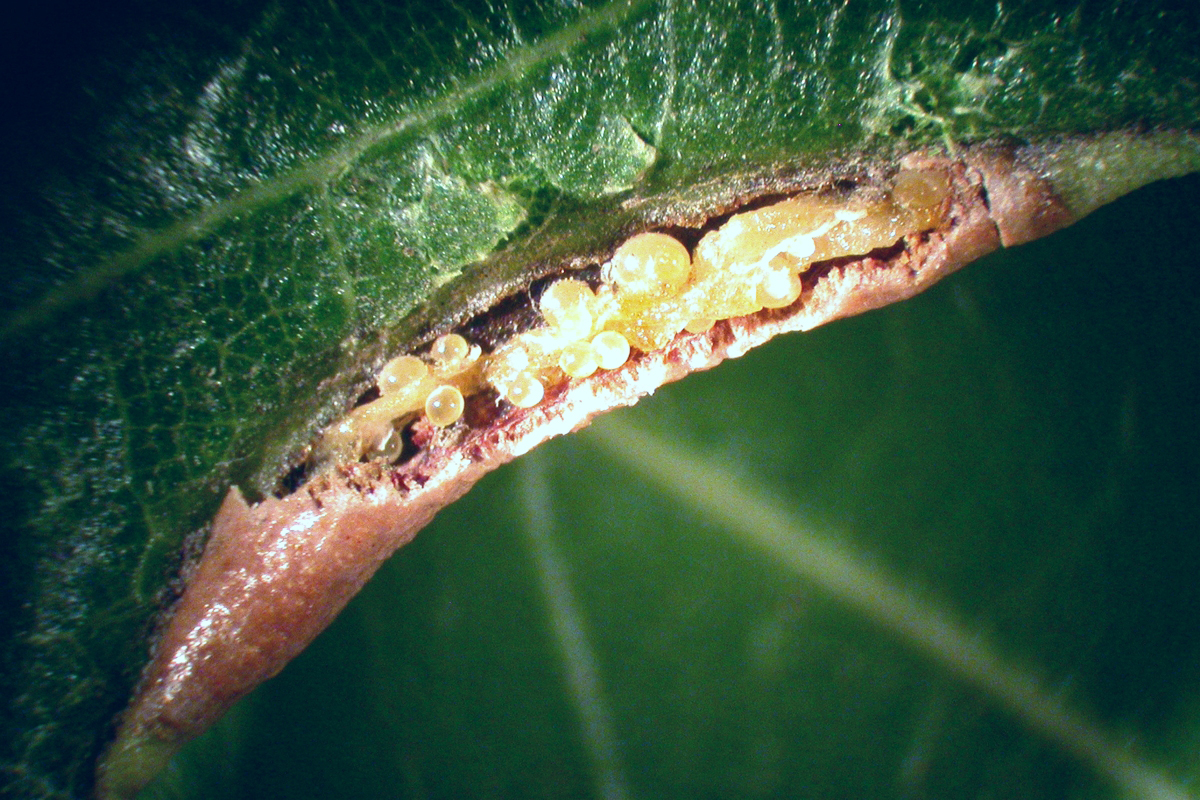
By Jody Green, Extension Educator
Mites are not insects. They are arachnids and more closely related to spiders and ticks than to insects. There are likely over a million species of mites in the world, many predatory, some parasitic and very few are pests of humans.
This article will discuss an irritating mite called the oak leaf gall itch mite or the Pyemotes itch mite.
HISTORY OF THE OUTBREAK
In August of 2004, individuals living in various communities in Nebraska, Kansas, Missouri and Texas suffered from an outbreak of bites consisting of red, itchy welts. After much investigation and scientific teamwork, the culprit was identified as the Pyemotes itch mite.
Since then, there have been some reports of itch mite reactions, but the amount and distribution vary by year due to environmental conditions throughout the winter and spring that may be favorable for the mites to thrive. This pest is known to cause intense itching for some residents in Lancaster County from July through late fall.
OAK GALL MIDGES
Galls are abnormal growths on leaves formed by plant tissues in response to a pest. On oak leaves, galls formed by the oak gall midges (small flies) are brown, crusty, curled up shells along the edges. Pin oak trees and other trees in the ‘red oak’ group are common trees known to host the oak gall midge larvae and its predator, the oak leaf gall itch mite.
PYEMOTES ITCH MITES
The oak leaf gall itch mite is a predator of the oak gall midge larvae. The oak leaf gall itch mite is approximately 1/125th-inch long, invisible to the naked eye. It has four pairs of legs and piercing mouthparts, which allow it to inject a neurotoxic saliva into their hosts. Adult males do not feed, but females feed on oak gall midges. In populations with oak leaf gall itch mites, 10 percent are males and the remaining 90 percent are female.
Male adult mites emerge first and mate with females as they emerge before the males die. Female adult mites find a leaf gall and begin to swell until they are incapable of movement. Her swollen abdomen may contain over 250 offspring.
The mites are parasites of midges and attach to them until the mite offspring are ready to emerge as adults. Where food and environmental conditions are favorable, the mite can complete its life cycle in seven days, multiple times throughout the season. This can lead to extremely heavy populations of mites in a small area.
In late summer, the mature midges fly off to find mates and the parasitic mites are left without a food source. This is when the mites leave the galls and drop or are blown by the wind on to unsuspecting humans and animals below.
ITCH MITE BITES
The oak leaf gall itch mites are not vectors of disease in the U.S. nor are they blood feeders. They feed on skin tissue and their feeding causes raised, red welts with a centralized blister. They cause itching and painful bites which include intense itching and scratching that may lead to secondary bacterial infections.
Reactions from mites occur 10–16 hours after exposure as it takes a while for mites to attach and feed. Itching usually lasts about 10 days and bites can persist for two weeks, unless infected, when it can last even longer. Bites are often found where clothing is loose like around the neckline, face, shoulders and chest. Bites have been reported on cats and dogs.
PREVENTION AND CONTROLUnfortunately, there is no practical control or prevention for oak leaf gall itch mite. There are no pesticides labeled to be applied to the tree to prevent oak galls from forming and mites from taking up residence in the galls.
There is no conclusive research to support that mosquito and tick repellents are effective for reducing bites by the itch mites. The only way to protect from bites is to limit time outside, especially under infested trees. It is also recommended people remove their outdoor clothes immediately after coming in from outside and take a shower to dislodge mites. Do not re-wear clothing and have it laundered because mites can remain on fabric for several days.
WHEN IT IS SAFE TO GO OUTSIDE
The problem with itch mites is there is no way to predict where and when there will be an outbreak. Because they are windblown, they can travel great distances, there is no way of knowing how far they can spread. Due to their minute size, they can enter homes through screens.
Itch mites can fall from trees by the hundreds of thousands per day. They can persist throughout the summer and even into the fall, subsiding when a hard freeze kills them.